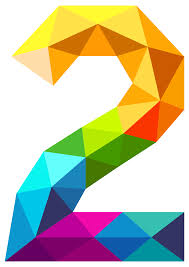<< Previous
2.1
Content and teaching strategies of the teaching area
Demonstrate knowledge and understanding of the concepts, substance and structure of the content and teaching strategies of the teaching area.
During my placement I taught year 10 English. The students were reading a class novel called Ender’s Game by Orson Scott Card. Student’s were allocated various formative and summative assessments relating to the novel. I had to research the novel to develop my own knowledge and understanding of the text. Students were assigned an oral response task to choose a stance (agree or disagree) in relation to a number of statements. Students had to support their decision using specific examples from Ender’s Game.
I taught a class on how to construct a convincing argument to assist with the oral response task. This involved firstly, familiarising and identifying the characters, themes and ideas expressed in the text, exploring the role of leadership, governance and human rights. This enabled me to better understand the concepts and structure of the content I was teaching. I explored a simple method for constructing a convincing argument and presented this to my students.
Below is a copy of the Oral Reponse Task given to the year 10 English students.
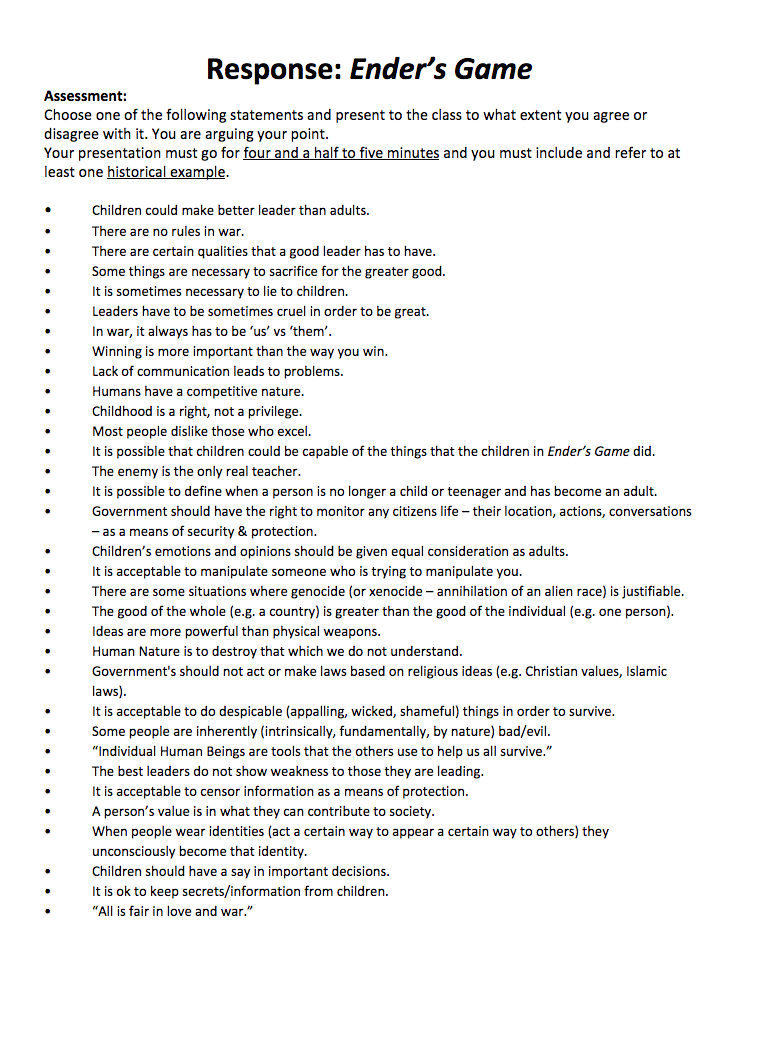
2.2
Content selection and organisation
The artefact I have chosen is an excerpt from my agenda for my professional development training for school teachers. This demonstrates my proficiency in organising sequential activities and content for effective learning. The workshop begins by preparing the participants for learning and encourages participants to self-reflect on their current skills and abilities towards dance. This is followed by an ice-breaker activity focused on collaboration, effective communication & physical movement. I have applied the DAR (Describe, Analyse, Review) approach to the different workshop activities. This is supported by participants setting their own personal learning goal for the day using the SMART goal setting technique. This is then scaffolded with further learning activities that enhance the learners core knowledge, understanding and principles for teaching dance in the Australian curriculum. The learning and teaching sequence that I have applied to this workshop is complimentary to the approach I would utilise in my own classroom practice.
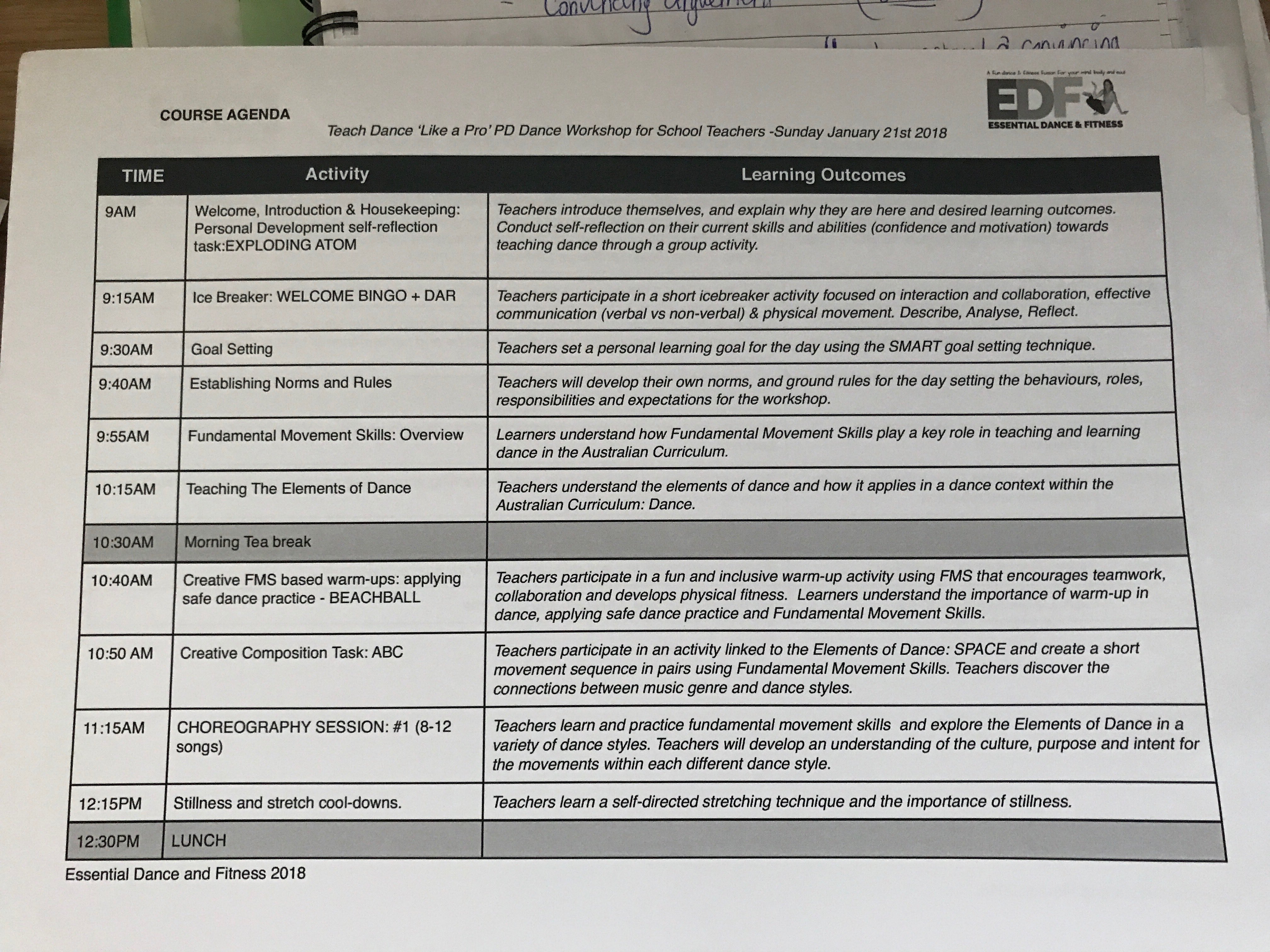
2.3
Curriculum, assessment and reporting
Use curriculum, assessment and reporting knowledge to design learning sequences and lesson plans.
During my placement I was working with a year 9 English class. As students had recently been studying Shakespeare’s Romeo and Juliet, I delivered a small unit of work on Shakespearean Sonnets. This unit was taught for enjoyment and aesthetic reasons as a formative assessment piece. As I was teaching poetry I had to design learning experiences that would introduce students to the stylistic elements of Sonnet Writing. I decided on using activities such as word association games, sentence construction and a collaborative class activity that involved writing a Sonnet as a group. This was supported with an overview of poetic devices that we would students would need to incorporate such as verse, meter (Iambic pentameter) and syllables. I decided to focus on popular love songs that had been written into Sonnets as examples for the students. I then developed a formative assessment task where students could choose their own song and write it as a Sonnet. For the purposes of task, I developed criteria for assessment that aligned with the Australian Curriculum and ACARA for English at the year 9 level. This rubric included key performance measures for student achievement and attainment.
The artefact I have chosen is the Rubric I created for the Assessment Task.

2.4
Understand and respect Aboriginal and Torres Strait Islander people to promote reconciliation between Indigenous and non-Indigenous Australians
NAIDOC (National Aboriginal and Islander Day Observance Committee) Week is an Australian observance which for 2018 took place from Sunday July 8th – 15th. It was during this week that I participated in the Panpapanpalya joint dance congress in Adelaide. The congress began with a welcome to Country with an Aboriginal traditional smoking ceremony and a sharing celebration by Kurruru Arts and Culture Hub; a performing arts and cultural program providing ongoing high-quality creative arts and cultural support to children and young people in the Aboriginal and Torres Strait Islander Community. My participation in this event strengthened my knowledge, understanding and respect for Aboriginal and Torres Strait Islander histories, cultures and languages highlighting a way of promoting reconciliation between Indigenous and non-Indigenous Australians.
The artefact I have chosen is a Critical Review I completed for my university course Aboriginal Education, Culture, Curriculum and Change. This further demonstrates my knowledge and understanding for Aboriginal and Torres Strait Islander histories, cultures and how it can be incorporated into classroom curriculum.
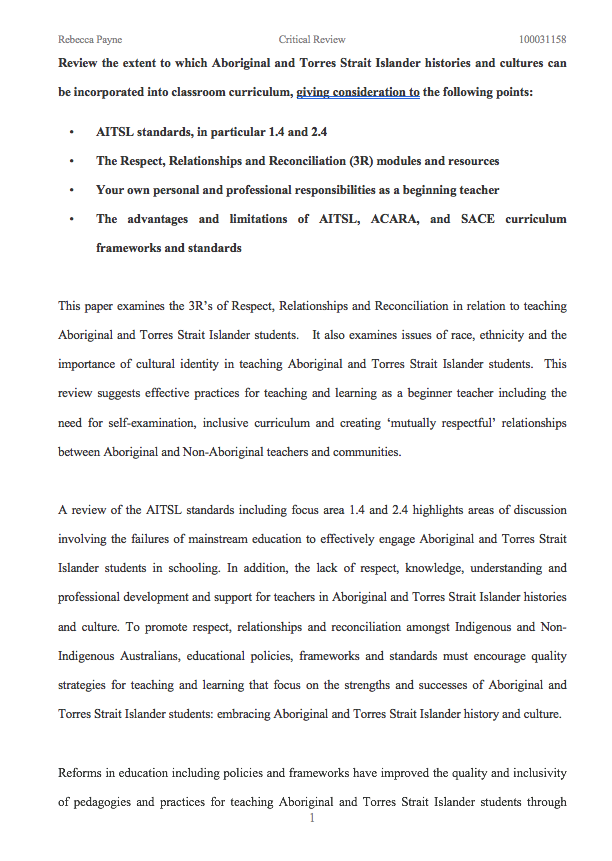
2.5
Literacy and numeracy strategies
I believe that there must be a whole school approach to how we teach both Literacy and Numeracy in the classroom. Literacy and Numeracy are 2 of the general capabilities in the Australian Curriculum. During my time as a School Support Officer I worked with students in mainstream classes who had special and diverse learning needs and also students in the disability unit. In mainstream classes, I supported students in designated literacy and numeracy classes. I spent a number of hours working to support both mainstream and students with special and diverse learning needs in year 8, 9 and 10 mathematics classes.
My teaching strategy for supporting students in the mathematic class involved breaking down the content into steps and using visual diagrams to further illustrate the concept being taught. I utilised questioning to assess the student’s knowledge and understanding and where there were gaps identified I would revisit the key concepts and ideas to better support the students understanding of the mathematical problems. What I noticed was a lack of differentiation for students with special and diverse learning needs in mainstream classes across years 8, 9 and 10. Also, an over reliance on worksheets, individualised assessment tasks and activties and mathematical textbooks.
Developing the skills and abilities of students and improving their capacity for literacy and numeracy extends beyond the subject areas of mathematics and English to all subject areas.
In writing my own lesson activities and units in dance I have strongly incorporated both literacy and numeracy skills. During an activity involving collaboration (small groups of 4-5 students) with my year 8 students I ask them to brainstorm what they know and what they have learned during our dance classes. This involves students brainstorming their thoughts and ideas and sharing it with others. Once students have completed this task they perform a gallery walk to analyse, reflect and review on the ideas and thoughts of their peers. It is during the written activities within my classes that I can make an assessment on the level of literacy amongst my class and students. Often there are particular words or phrases that are discussed and shared amongst the group in terms of spelling and interpretation.
One artefact I have chosen is an example of one of the dance brainstorming activities I use that develops student’s literacy through year 8 dance. The second artefact is a year 8 mathematics worksheet that I was working on with 2 students with autism spectrum disorder.

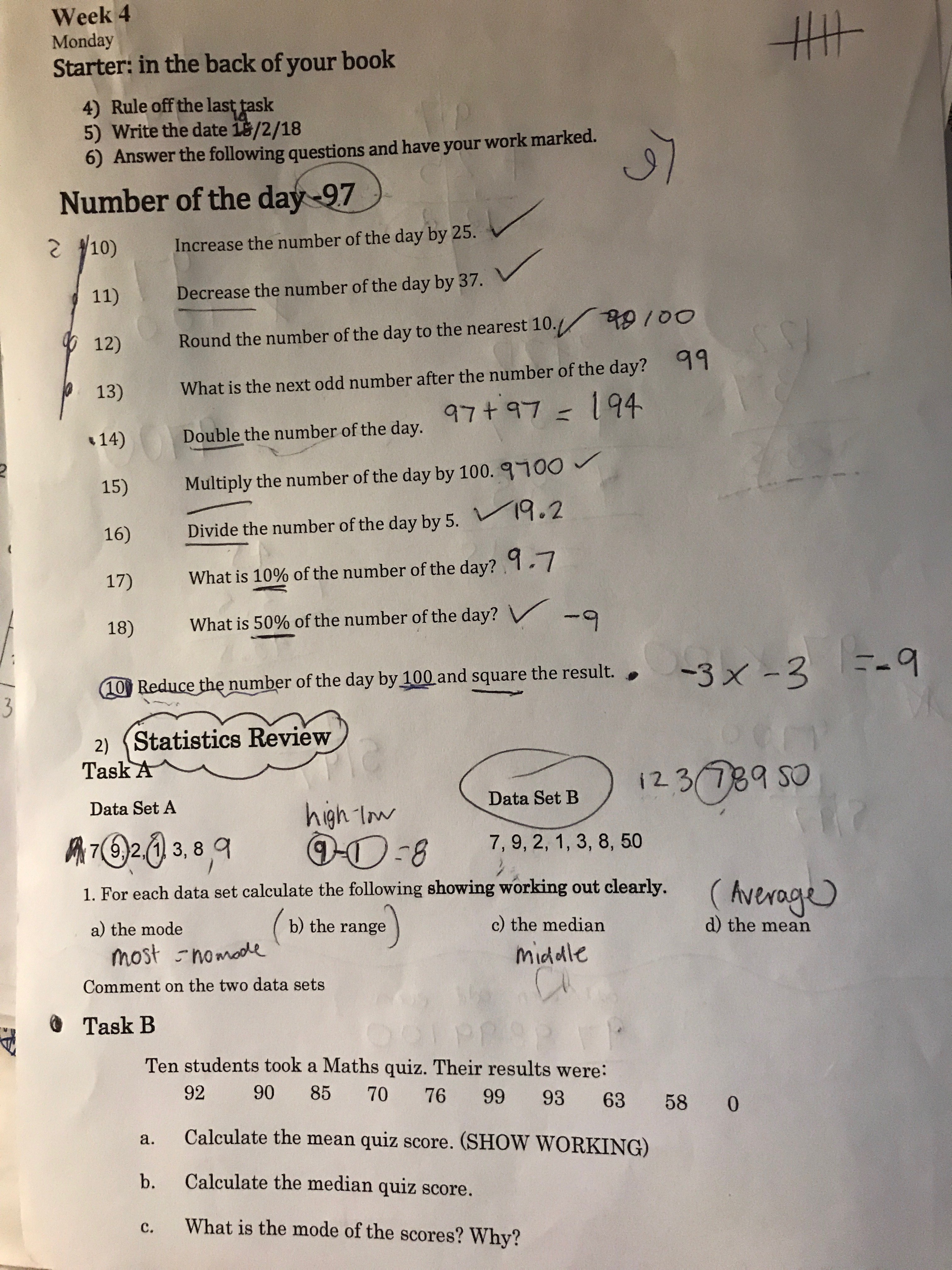
2.6
Information and Communication Technology (ICT)
Information and Communication Technology (ICT) is one of the general capabilities in the Australian Curriculum. Within the Arts Curriculum, students engage with ICT through digital technologies and virtual technologies when making and responding to artworks. I observed the ways in which students located, accessed, selected and evaluated information during lesson time. I incorporated digital technologies to share and exchange information such as PowerPoint and Kahoot collaborative web-based learning games. I utilised short videos, smartboards and related google classroom technologies to communicate more effectively with students during my English classes.
During my placement I was alerted to the ways in which secondary students engaged with ICT in the classroom. This aroused some concern for me as a teacher regarding the social and ethical protocols and practices of students in the digital environment. In particular, examining whether ICT use in secondary classes enhanced or hindered students learning experience. This has shaped my action research report that I will endeavour to conduct during my final placement.
The artefact I have included is a link to my proposed action research report.

